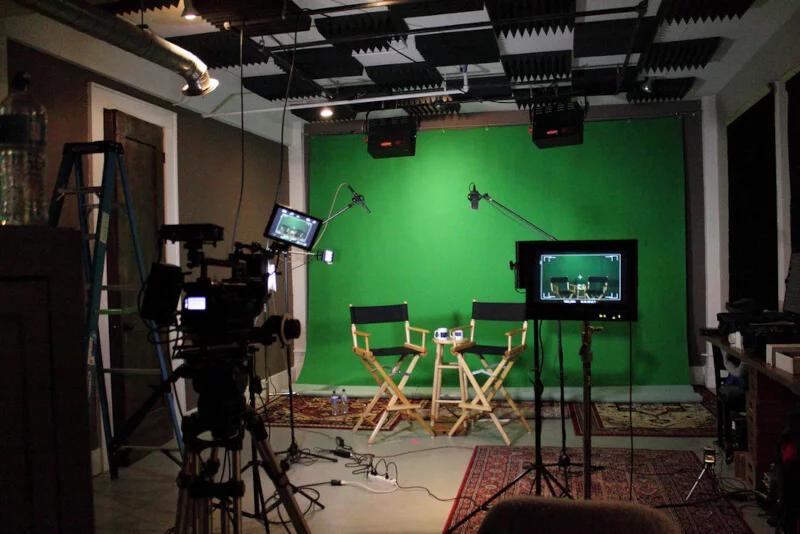Shooting sequences with a green screen is one of those things that, if not done right, may be noticed by the viewer from a mile away, pulling them out of the world you’ve created for them. You obviously don’t want that to happen, but it may take years of practise and learning from mistakes before you completely master the art of green screen filming. We’ve produced a list of the top five tips to make things easier for you, which are as follows:
1. The key to success is thorough planning
You can never be too prepared for an event like this! Before you begin filming, you should have a thorough grasp of all of the camera angles that you intend to use, as well as a storyboard or pre-visualization that you have communicated to your whole crew (and talent). Both you and your cinematographer must render your background in advance, and your cinematographer must know where your preferred light source will come from (more on that later). Show this to your actors so they may better grasp their surroundings and adjust their eyelines.
2. Use numerous accessories to personalise your “home.”
Even if you’re filming in front of a green screen, you should still create a set and use props. On the contrary, doing so will assist you in more successfully “selling” the scenario that you are aiming to build. You should make every attempt to include as many real elements as possible. This will not only make it easier for your actor to interact with the environment, but it will also lessen the amount of post-production work required.
3. Create a blocking strategy
Despite the fact that it is part of your preparation, this should be acknowledged separately. You will need to lay out your blocking in detail before the day of filming so that you are familiar with all of the camera angles and can give your characters specific blocking orders. This will keep your actor from feeling confined because they will be aware of the limits imposed by the space.
4. Use the camera to experiment with different perspectives
Getting the shot from the right angle with your camera might make all the difference. Avoid having your actor face the camera when the green screen is directly behind them; this can create a “flat” effect in the movie and is often a dead giveaway that you’re using green screen. Instead, have your actor face the opposite way the green screen is facing. As we have previously mentioned, storyboard your shots or lay out your camera settings in advance to ensure that you get the most out of each and every photograph (as you would if you were shooting on location). When recording, it is crucial to have the overall shot in mind at all times, and you should not be afraid to experiment with different low and high camera angles.
5. Constant illumination (Lighting)
Another component that, if managed incorrectly, will reveal the use of a green screen is lighting. The lighting on your actors should be part of the world you’re creating for them post-production, and the actual green screen should be lit flat and exposed with no shadows falling on it. If you consider the end result, you will be able to discern where the inspiring light should originate from. This could be the angle at which a sunset would shine down on the character rather than the dappled lighting effect that would occur under a forest canopy. This aids in making your characters appear to be a part of the background you intend for them to be in, rather than out of place.
If you follow all of these principles, you will be well on your way to accomplishing things with green screen that were previously thought to be impossible! Green screen has its own set of challenges, but it should be embraced for the benefits it offers and exploited to create appealing visuals that help you creatively advance your story.

